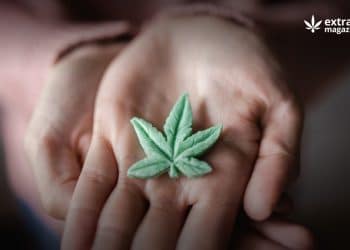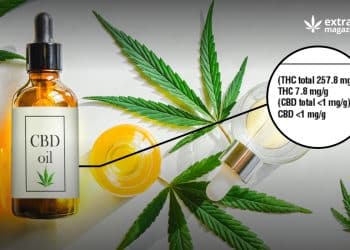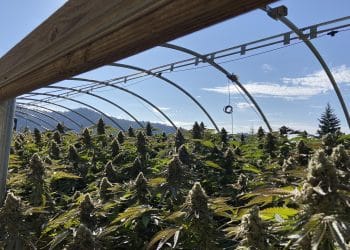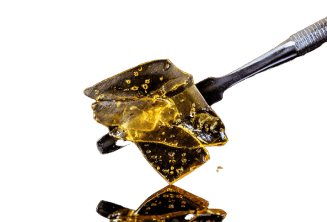Cannabis growers are increasingly recognizing the importance of sustainability in their cannabis operation by recycling. In an effort to reduce environmental impact and optimize resource use, they are turning towards recycling practices. This approach not only contributes to a greener planet but also offers potential cost savings and efficiency improvements for cannabis cultivation. By integrating recycling methods, they can repurpose organic waste, water, and even soil, ensuring that every aspect of the cannabis growing process is as environmentally friendly as possible. This sustainable shift not only aligns with global environmental goals but also meets consumer demand for responsibly produced products. As the industry evolves, these practices set a new standard for responsible cannabis cultivation.
Environmental and Economic Benefits of Solvent Recycling
Solvent recycling within cannabis operation by recycling presents significant environmental and economic advantages. By implementing solvent recycling practices, growers can significantly reduce hazardous waste disposal costs. Typically, the disposal of solvents involves complex processes that are not only costly but also harmful to the environment. Recycling these solvents means less waste is produced, leading to lower disposal fees for businesses. This approach offers a direct financial benefit by cutting operational costs.
Moreover, solvent recycling contributes to a smaller carbon footprint for cannabis operation by recycling. The production and disposal of solvents emit considerable amounts of greenhouse gases. However, when cannabis growers recycle solvents, they minimize these emissions. This reduction in greenhouse gases is crucial for sustainability efforts and aligns with global objectives to combat climate change. It showcases how the industry can contribute positively towards environmental conservation.
This practice extends the lifespan of solvents, thereby reducing the need to purchase new ones frequently. Solvent recycling systems allow these substances to be cleaned and reused multiple times without losing their effectiveness in extracting cannabinoids from plant materials. This not only saves money but also reduces resource consumption, further emphasizing sustainability within the sector. The benefits extend beyond mere cost savings:
-
Reduction in hazardous waste helps comply with strict regulations surrounding waste management;
-
Lowered carbon footprint enhances brand reputation among environmentally conscious consumers;
-
Extending solvent lifespan leads to less frequent purchasing, which directly impacts a company’s bottom line positively.
Cannabis growers who adopt solvent recycling technologies position themselves as industry leaders in both innovation and sustainability efforts.
Choosing the Right Solvent for Efficient Extraction
Selecting an appropriate solvent is crucial for achieving efficient extraction of cannabinoids. This process requires a balance between efficiency, safety, and environmental considerations. Among the solvents used in cannabis operation by recycling, hydrocarbon solvents like butane and propane are popular due to their high extraction efficiency. They dissolve cannabinoids effectively, resulting in a potent extract. However, these solvents pose significant safety risks and challenges in recycling.
Another option is isopropyl alcohol, known for its effectiveness in extracting a wide range of compounds including terpenes and cannabinoids. Its boiling point allows for relatively easy recovery through distillation processes, making it safer and more sustainable than hydrocarbons. Yet, the purity level of the solvent directly impacts the quality of the extract; impurities can degrade product quality.
Solvent less extraction methods also exist but may not always meet the needs of large-scale operations seeking high potency extracts. These methods include mechanical separation techniques that rely on ideal particle size and low temperature to preserve terpenes without using chemical solvents. The choice of solvent also depends on other factors:
-
Extraction method;
-
Material form;
-
Desired compounds.
For those emphasizing sustainability, focusing on solvents easier to recycle is key. Techniques such as column chromatography can enhance both purity levels and recyclability by facilitating cleaner separation processes.
Techniques for Optimizing Solvent Recovery
Cannabis growers often seek to enhance the efficiency and sustainability of their operations. One key area of focus is solvent recovery. This process is crucial for reducing waste and costs, while also minimizing environmental impact. By adopting advanced techniques, they can optimize this aspect of their operation.
Distillation stands as a primary method for recovering solvents in cannabis extraction processes. Specifically, fractional distillation allows for the separation and collection of various components based on differences in boiling points. This technique ensures that valuable compounds are not lost during extraction, thereby maximizing yield and purity. Distillation equipment designed specifically for cannabis operation by recycling plays a vital role here, enabling precise control over temperature and pressure conditions.
To further improve recovery rates, incorporating vacuum technology has proven effective. By reducing the pressure within the distillation apparatus, it’s possible to lower the boiling points of solvents. This means that they can be evaporated and then condensed back into liquid form at much lower temperatures than under standard atmospheric conditions. The result is not only faster recovery times but also less energy consumption.
Another innovative approach involves membrane filtration technology. This method supports solvent purity maintenance by selectively allowing certain molecules to pass through a membrane while retaining others based on size or chemical properties. It’s particularly useful when dealing with complex mixtures where maintaining solvent integrity is essential.
Cheap Variation:
- The cost of hydrocarbon extraction equipment (butane or propane) can range from $5,000 to $100,000, depending on the size and intended production output. This includes the cost of the apparatus and the requisite skill set for operation, with additional considerations for legal and safety requirements.
- Ethanol extraction apparatus may range from as low as $5,000 to several million dollars, depending on the size and extent of automation. The technical skillset required includes an educated operator with a basic or moderate knowledge in chemistry, along with ancillary requirements such as legal and compliance clearance from relevant authorities.
Expensive Variation:
- CO2 extraction systems can start at about $100,000 and may go up to several million dollars. These high upfront costs make this method of production prohibitively expensive for some startups, and they also require special training for operators
Enhancing Efficiency through Solvent Recycling
In the quest for sustainability and efficiency, cannabis growers are increasingly turning to solvent recycling. This method not only conserves resources but also significantly reduces operational costs. By implementing closed-loop systems, they can minimize solvent loss dramatically. These systems capture solvents after their use in the extraction process and funnel them back into the system for reuse. The principle is simple yet effective: instead of disposing of solvents post-extraction, they are cleaned and recycled.
The technology behind this involves sophisticated distillation units or supercritical fluid systems that purify the used solvent, making it as good as new. For instance, a distillation tank heats the liquid until it vaporizes, then cools it back into a liquid form in a separate chamber free from impurities. Supercritical CO2 recycling employs carbon dioxide in its supercritical state to act both as a solvent and an agent for solvent recovery with minimal waste production.
Furthermore, these operations have adopted real-time monitoring tools to optimize recycling processes further. Sensors measure parameters such as flow rate and pump performance continuously to ensure optimal operation of the recycling system. This data allows operators to make adjustments on-the-fly, enhancing efficiency without compromising quality.
Safety and Compliance in Solvent Recycling
The implementation of solvent recycling in a cannabis operation by recycling necessitates strict adherence to safety and compliance standards. These regulations are not just guidelines but essential requirements to ensure the well-being of workers and the surrounding environment. Cannabis growers must navigate through a complex landscape of local and federal laws that govern the use, storage, and recycling of solvents.
To comply with these stringent regulations, it is critical for operations to install proper ventilation systems. Such systems play a pivotal role in mitigating fumes and vapors generated during the recycling process. They ensure that air quality within the facility remains within safe limits, protecting employees from potential health risks associated with solvent exposure.
Training staff on handling solvents safely is another cornerstone of maintaining a secure working environment. Employees must be knowledgeable about emergency procedures related to spills or accidental exposures. This training includes understanding how to use personal protective equipment (PPE), recognizing signs of overexposure, and knowing the steps to take in case of an incident.
 Promoting Environmental Sustainability
Promoting Environmental Sustainability
Cannabis growers are increasingly adopting green chemistry principles in their operations. These principles guide them in selecting and using solvents that minimize the environmental impact. The choice of solvent not only affects the efficiency and quality of the extraction process but also has significant implications for environmental sustainability. By prioritizing solvents that are less toxic and more easily recyclable, they can reduce hazardous waste.
Renewable solvents represent a promising alternative to conventional options. Derived from biomass, these solvents are biodegradable and have a lower carbon footprint. Their adoption is encouraged as part of a broader strategy to make cannabis operations more sustainable. However, transitioning to renewable solvents requires careful consideration of factors such as performance, cost, and availability.
Recycling plays a crucial role in minimizing waste from cannabis operations. Through effective recycling strategies, growers can significantly reduce their reliance on new materials, thereby decreasing pollution and conserving resources. This involves not just recycling solvents but also other materials used in cultivation and processing, such as growing media and packaging. The benefits of these practices extend beyond environmental protection. They can also lead to financial savings through reduced material costs and enhanced efficiency. Moreover, by demonstrating commitment to sustainability, cannabis businesses can improve their reputation among environmentally conscious customers.
Sustainable Solvent Recycling in Cannabis Extraction Operations
In their pursuit of purified extractions of THC, manufacturers of cannabis concentrates use solvents like butane, propane, ethanol, and supercritical CO2 to strip cannabis plants of their desired resins and oils. The solvents are then purged from the extract, but what happens to them afterwards? In an industry with high startup costs, solvent recycling and recovery is an important way to increase your extraction efficiency.
Professional cannabis extractions and solvent recycling take place in a closed-loop system. The process begins with the solvent flowing from a solvent tank into a material column where the solvent strips cannabinoids and terpenes from cannabis biomass. This mixture of liquid solvent and cannabis oils is then transferred into a collection vessel, where warm water heats the vessel to the relatively low temperature of the solvent’s boiling point while preserving the cannabinoids and terpenes. The vaporized solvent travels through a molecular sieve, removing any moisture. A pump then pushes the gaseous solvent into a condensing coil, returning it to its liquid form before being returned to the solvent tank where the process began.
This process is fairly efficient. However, you won’t be able to recover 100% of the solvent used in your extraction. A small amount of solvent can linger in the extract, decompose, or be lost to vapor traps. A source familiar with industry practices told us that, in a column containing 3 lbs of plant material, you can expect to lose 1 ± 0.4 lbs of solvent. Higher recovery is possible given more time and energy expended. Some highly efficient cannabis operations that recycle their solvents using specialized equipment have been able to reduce new solvent purchases by 95% because you can recycle solvents many times over. Every time you recycle a solvent, all of the bacterial and solid contaminants are removed and the clean solvent will be returned back to near-original purity. However, over time, other gases with similar boiling points to your solvent – like water or alcohol – may get mixed in.
Cannabis cultivators and infusion operations have high start-up costs. Extraction machinery and rotary evaporators can cost well over $500,000 combined, and that’s not to mention the costs of buildings, licenses, and salaries for lab technicians. Making the decision to recycle and reuse the solvents used in your extraction process is an ecologically friendly way to minimize one of your recurring operational expenses.
Addressing Safety Concerns in Solvent Recycling Systems
Cannabis growers have recognized the importance of sustainable practices, especially in solvent recycling. However, safety remains a paramount concern. They adopt several measures to ensure that solvent recycling systems are not only efficient but also safe for both operators and the environment. One critical step involves implementing fail-safes and alarms for leak detection. These systems are designed to alert operators immediately if there is a breach or malfunction that could lead to leaks of potentially hazardous chemicals. This immediate notification allows for swift action, preventing any potential harm or environmental damage.
Furthermore, regular maintenance checks are conducted on all equipment involved in the recycling process. These checks help identify wear and tear on contact parts, reducing contact stress that can lead to equipment failure over time. By preemptively addressing these issues, cannabis operations significantly lower the risk of unexpected malfunctions that could compromise safety standards.
Ensuring recycled solvents meet rigorous safety standards before reuse is another cornerstone of their approach. After solvents are recycled, they undergo thorough testing to confirm they are free from contaminants and retain the necessary purity levels for safe use in extraction processes again. This step is crucial not only for product quality but also for maintaining an operation’s reputation and compliance with regulatory requirements.
Final Remarks
Growers have recognized the economic and environmental imperatives of incorporating solvent cannabis operation by recycling into their operations. Through the meticulous selection of solvents, optimization of recovery techniques, and adherence to safety and compliance standards, they enhance efficiency and promote sustainability. Innovations in sustainable extraction practices not only address safety concerns but also pave the way for scalability in cannabis extraction processes. The collective effort towards solvent recycling reflects a commitment to environmental stewardship and operational excellence.

 Promoting Environmental Sustainability
Promoting Environmental Sustainability










